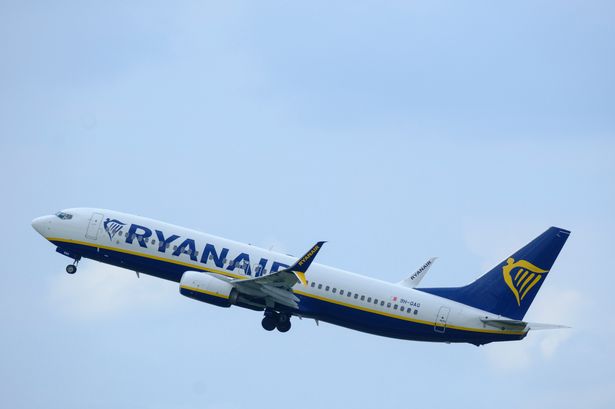Storm Eowyn, a powerful tempest that swept across the region, brought with it fierce winds and challenging conditions, significantly impacting air travel. Several flights attempting to land amidst the storm’s fury faced turbulent conditions, with passengers recounting harrowing experiences of being buffeted by strong gusts. One particular flight arriving at Cork Airport from Gran Canaria became a focal point, highlighting the difficulties faced by pilots and the anxieties experienced by passengers during such extreme weather events.
The flight from Gran Canaria, a popular tourist destination known for its sunny skies and calm weather, encountered a starkly different reality upon approaching Cork. As Storm Eowyn raged, its powerful winds created an invisible gauntlet for incoming aircraft. Passengers described the flight as exceptionally turbulent, with the plane experiencing significant buffeting and rocking motions as it navigated through the storm’s gusts. The unsettling movements heightened anxieties within the cabin, as travelers braced themselves against the unpredictable forces of nature.
Upon approach to Cork Airport, the challenging conditions intensified. The pilots, skillfully battling the fierce crosswinds, made several attempts to land. Each aborted landing further amplified the passengers’ apprehension, with the repeated ascents and descents adding to the already stressful situation. The tension within the cabin was palpable as travelers gripped their seats, their faces reflecting a mixture of fear and anticipation. Some recounted moments of shared anxiety, holding hands with fellow passengers or offering words of comfort to those visibly distressed. The ordeal, though relatively short in duration, felt significantly longer due to the intense nature of the experience.
Outside the aircraft, the ground crews at Cork Airport braced themselves against the storm’s fury, their efforts mirroring the pilots’ challenging task in the air. Baggage handlers and ground staff worked diligently amidst the strong winds and driving rain, securing equipment and ensuring the safety of personnel and passengers alike. Their dedication and professionalism were essential in maintaining operations under such demanding circumstances. The control tower personnel played a crucial role, communicating vital information to incoming flights, guiding them through the challenging conditions, and coordinating with ground crews to ensure a smooth, if somewhat turbulent, arrival.
The eventual successful landing was met with a collective sigh of relief from both passengers and crew. The shared experience of navigating the storm’s turbulence fostered a sense of camaraderie among those on board, a bond forged in the face of adversity. Stepping onto solid ground was a welcome reprieve, and many passengers expressed gratitude for the skill and composure of the flight crew who expertly guided them through the challenging conditions. While the experience was undoubtedly unsettling, it served as a stark reminder of the power of nature and the resilience of both human ingenuity and the human spirit.
The experiences of the passengers arriving from Gran Canaria, along with those from other affected flights, underscore the significant impact of severe weather events on air travel. Storm Eowyn’s powerful winds posed a substantial challenge to pilots, requiring exceptional skill and judgment to navigate safely. The turbulent conditions also highlighted the importance of robust safety protocols and the training and experience of flight crews in managing such situations. Furthermore, the incident emphasized the essential role of ground support staff in maintaining airport operations during adverse weather conditions. While technology plays a crucial role in modern aviation, it is the human element, the skill of the pilots, the dedication of the ground crew, and the resilience of the passengers that ultimately ensures safe passage through even the most challenging circumstances.














